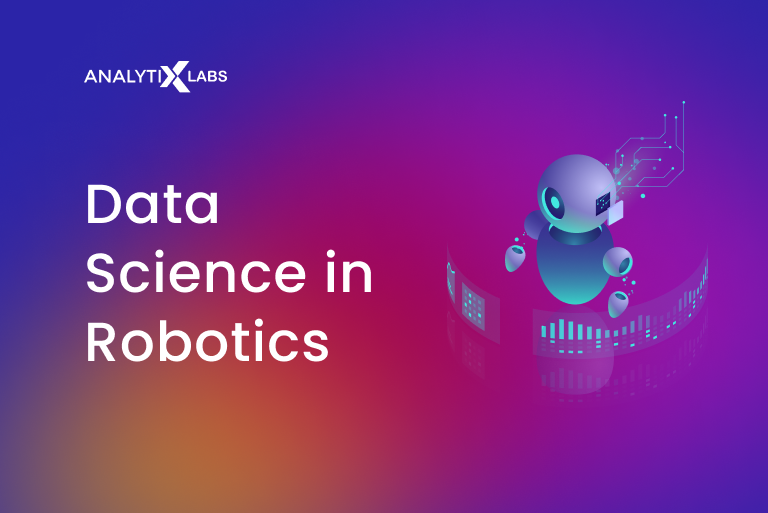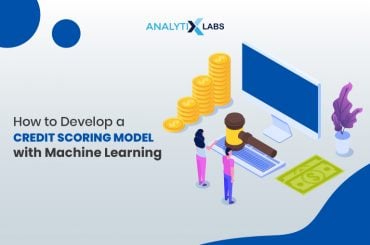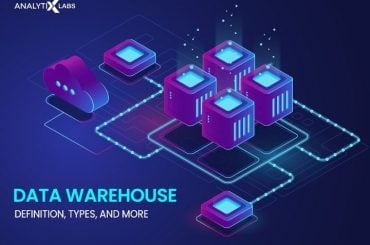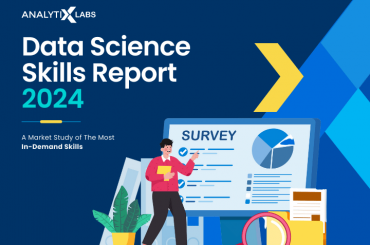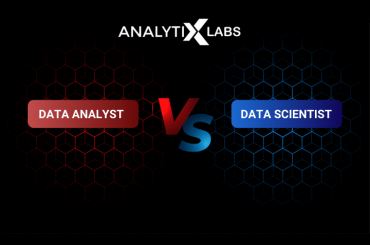The field of data science is filled with opportunities as it continues to expand its horizon. As new innovations find their way into the world, the robotics and data science field evolves to entwine together. Data Science in robotics is a reality now.
Until recently, robots were mostly confined to the realm of sci-fi movies and TV shows, where they showcased their superhuman strength, artificial intelligence, and uncanny accuracy. But with advances in data science and engineering, robots are no longer just a figment of the imagination. They’re here, and they’re ready to work.
We’re still far from Arnold Schwarzenegger-esque Terminators, but robots are becoming increasingly more capable and integrated into everyday life. And that brings us to the ethical implications of this technology.
As data science and robotics continue to make impressive strides, the voices of those concerned about the ethical ramifications of these advancements are growing increasingly louder.
In this article, we’ll dive into data science ethics in robotics. We’ll explore how you can steer clear of any potential ethical pitfalls and help you navigate this exciting new world responsibly. So pour yourself a cup of coffee, sit back, and prepare for a tour of the fascinating intersection between machines and morality.
How is Data Science helping Advance Robotics?
> The Challenge
When scientists were first dabbling in robotics, their efforts were met with countless challenges. Yes, they could get robotic hands to assemble a car part, but teaching it to identify objects in a complex environment or make real-time decisions? Nearly impossible.
The data used to power real-time and vision-oriented tasks was unwieldy and chaotic, making it difficult to understand and predict the robot’s behavior or action. But that all changed when data science stepped in and started to provide some much-needed help.
> The Solution
Instead of requiring scientists to reprogram a robot every time they needed it to do something new or wanted it to understand a trend, data science enabled them to train robots with labeled data, so they would be able to evolve and identify mistakes on their own.
In other words, data science empowers robots to learn and adapt with minimal human intervention. Think of it as upgrading from a bulky workflow automation tool that requires coding skills akin to Neo in The Matrix to a modern, innovative no-code platform that allows you to tweak workflows with a snap of your fingers.
In the same way, data science enables robots to learn and become more competent with minimal effort, paving the way for more efficient and powerful machines.
Application of Data Science in Robotics
Data science has given robotics the push it needs, unleashing a world of exciting applications that were once relegated to the pages of science fiction.
Also Read: 15 Real-world Applications of AI
-
Autonomous vehicles
There’s something undeniably futuristic about the idea of self-driving cars. But what was once pure imagination is now a reality, thanks to the combination of robotics and data science.
Giants like Tesla, Ford, Waymo, Volkswagen, and BMW are at the forefront of this revolution, developing cutting-edge technology that promises to transform how we travel.
And it’s not just private transportation that’s getting a facelift. Rideshare behemoths Uber and Lyft are investing heavily in autonomous vehicles, which could make human-driven taxis a thing of the past.
If this isn’t exciting enough, beating Tesla’s autopilot is Zoox. Zoox is supposed to be 3 steps higher than Tesla and is proof of major complexity. Take a look at how it functions –
-
Mobile robots
Mobile robots are controlled by software programming that use sensors and AI technologies to identify their surrounding and move around. These robots are a combination of AI and physical robotic elements like wheels or legs.
All mobile robots have a source to input data. They decode this data to react in the outside world. Robots can now walk, run, and jump like living components thanks to AI and machine learning advancements.
Also read: How to Learn AI and Machine Learning by Yourself – A Step-by step Guide
TUG, for example, is an autonomous robot that tirelessly works around the clock, moving crucial clinical supplies and materials to and fro.
TUG allows healthcare staff to focus their undivided attention on patient care by taking care of the logistics.
Another example of mobile robots comes from UVD Robots, a Denmark-based company that makes UV-disinfection robots. These Danish-made bots are the ultimate disinfecting technology, cruising through hospitals and medical facilities, zapping every surface with ultraviolet light to keep it germ-free.
With its powerful algorithms and predictive capabilities, data science has helped unlock robotics from the shackles of being a purely industrial tool and catapulted it into a new era of innovation and potential. But with this newfound power comes greater responsibility. And that brings us to the ethical implications of data science in robotics.
-
Delivery robots
Companies are working hard to make flying drones and robotic deliveries commonplace. Domino’s Pizza, for example, piloted an autonomous robot delivery program in Houston, allowing customers to opt-in for robotic delivery. The robot, called R2, is powered by Nuro’s self-driving technology and safely delivers Domino’s pies to customers without human supervision.
-
Robotic paper filing
Even in a digital-first world, paper documents still remain an important part of many organizations. An average office worker produces 10,000 pieces of paper each year. That adds up to a lot of paperwork!
To ensure all those documents are properly managed and organized, a wide selection of electronic filing systems and hard copy archiving tools can be found online to help companies keep their paperwork in order.
But a supercharged solution is needed for massive institutions like the FBI, which have warehouses stacked high with millions of paper files.
That’s why the Bureau’s brand new Central Records Complex in Winchester has recruited a squad of tireless, automated robots to help organize millions of paper records from FBI offices nationwide. These robots can work around the clock, sorting, scanning, and filing records faster than any human could.
Data Science and Robotics: Ethical Risks
The twin dynamic of data science and robotics raises many ethical questions. Here are just some of the most pressing issues that need addressing:
Reinforcing human biases
Data science and robotics have the power to become the ultimate bias buster, but they also present the risk of amplifying existing biases or introducing new ones. The problem arises when algorithms are learned from human data that has already been tainted by biased beliefs and practices.
For instance, ProPublica’s investigation revealed that a criminal justice algorithm used in Broward County mislabeled African-American defendants as “high risk” at nearly twice the rate it mislabeled white defendants – a glaring example of how human bias can be perpetuated through technology.
Bias can also arise to reflect historical or social inequities, even when the data set is stripped of demographic information such as race, gender, or sexual orientation.
Amazon, for example, had to scrap a hiring algorithm that showed a preference for words such as “captured” or “executed,” which are commonly found in men’s resumes, and penalized resumes that included the word “women’s,” as in “women’s chess club captain.”
Moreover, over- or under-representing certain groups in the training data can also lead to skewed results.
A study conducted by Joy Buolamwini of MIT and Timnit Gebru from Microsoft Research found that facial analysis technologies had higher error rates for minorities, predominantly minority women, which could be due to unrepresentative training data.
Invading privacy and spying on users
Using data science-driven robots in daily life raises the stakes for privacy and surveillance concerns.
These robots are often equipped with sensors, cameras, or other technologies that can collect data about individuals, including personally identifiable information. This data can then be used to build detailed profiles of individuals and their behavior, leaving them vulnerable to exploitation.
China’s alleged “One person, one file” system is a particularly worrying example of data-driven surveillance.
According to the BBC’s Panorama, the Chinese government uses data science to collect data on citizens’ movements and interactions, resulting in a system that has the potential to monitor and control its population in unprecedented ways.
Meanwhile, in the good ol’ US of A, police departments are embracing predictive policing algorithms that anticipate where crimes will occur.
But these algorithms are influenced by arrest rates, which disproportionately impact Black communities, making them a target of greater police surveillance and scrutiny.
Compromising safety
With data science and robotics teaming up, we have a new set of safety concerns to worry about. Autonomous robots running amok could cause physical and economic damage if their programming is flawed or malfunctioning.
Autonomous vehicles, for instance, rely on data science to gather environmental information and make decisions regarding speed, direction, and braking. But what happens when things don’t go as planned? Who is held accountable if an autonomous vehicle crashes and injures a pedestrian?
Case in point: In 2018, an Uber self-driving car hit and killed a pedestrian in Arizona [source]. This marked the first death involving a self-driving car. The incident raised questions about the safety of autonomous vehicles.
The investigation by the Arizona Police Department and the US National Transportation Safety Board (NTSB) determined that the company was not criminally liable for the pedestrian’s death. Her cell phone distracted the safety driver, and the accident was deemed “completely avoidable.”
The algorithms driving these robots can also have unintended effects, such as when a self-driving car’s algorithm interprets hailstones as obstacles, resulting in a crash. Or if a Lethal Autonomous Weapon System (LAWS) algorithm mistakes a child for a combatant.
Furthermore, the potential for malicious actors to exploit autonomous systems raises additional safety risks. If autonomous weapons fall into the wrong hands, for instance, they could be used to perpetrate violence and terror, instigating potentially deadly consequences.
Mitigating the Risks
Companies typically handle the ethics of data science in robotics through discombobulated per-product discussions. This lack of protocol leads to either substantial risks going unchecked, crisis management as situations arise, or blind faith that things will work out.
But, for sustainable, efficient, and responsible data science practices, it’s essential to have an enterprise-wide policy on ethics of data science and robotics that encompasses the full spectrum of ethical risks. Some best practices to start with include:
Know your product’s impact
Data science and robotics, when working in tandem, have the potential to rewrite the rules of our world. But as companies move forward with such ambitious projects, they must always be cognizant of the potential for inadvertent harm their products may cause. They need to be sure what they create will benefit society, not just their bottom line.
Take the Flappy Bird mobile game, for instance.
Released in 2013, the game was pulled from app stores a year later for its highly addictive nature. The creator chose to be the ethical arbiter of his work, demonstrating the importance of being conscious of the consequences and implications of one’s product. Similarly, companies must ask themselves how their products might affect people and the world around them.
The same robot that’s programmed to provide a helping hand in healthcare services could easily be repurposed to spy on people. Therefore, rather than blindly optimizing and deploying data science-driven robotics solutions, companies must ask themselves if their work has the potential to do more harm than good.
Take human bias into account
Algorithms aren’t inherently biased. But algorithmic models can reproduce or even amplify existing biases when the data used to train them is unrepresentative and biased.
For this reason, organizations should strive to ensure that their data sets are as diverse and unbiased as possible. Additionally, they should ensure their data science teams have a diverse and inclusive makeup. A wide range of perspectives can help detect and mitigate bias in products and processes.
Organizations can take other steps to help reduce bias in their data science models, including instituting robust quality control protocols, continually monitoring and auditing the algorithms’ performances, and investing in tools and processes that help detect bias.
Uphold and promote data transparency
Organizations should be open and transparent about their data collection practices and customer data use. This includes providing customers with clear terms of service and the ability to opt-out or revoke their consent for data collection. Tools like QR codes can be of great help in this regard.
For example, a robotics company selling an autonomous vacuum cleaner can embed a static QR code on the product’s packaging, linking users to web pages that spill all the beans on their data collection and usage policies. There, they can also be provided with the option to opt-out or revoke consent at any time.
The best part? Creating a QR code is a fairly simple and inexpensive process. All you need is a secure and reliable QR Code Generator, which you’ll find plenty of online, and most of them are free to use.
Another way to make data collection policies transparent is by giving the dense and lengthy terms of service page a makeover. Break down the data clauses into easy-to-understand points that are written in plain English, and provide customers with quick summaries of their data collection and usage policies. That way, customers get an at-a-glance overview of what they’re signing up for.
Data Science is Essential for Robotics
Data science and robotics – both fields are rapidly evolving.
Like robotics, data science is also a culmination of scientific methods, mathematics, statistics, and computer programming. It requires AI and machine learning to extensively enable data-based decision-making, future predictions, and data model building.
On the other hand, robotics poses challenges when working on complex data to conduct real-time tasks that are vision-oriented.
This is where data science steps in. Data science, AI, and machine learning algorithms can help robots pick up new behavior faster through labeled data and perform vision-oriented tasks with much ease.
Learn data science for a robotics career
Data science and robotics are cross-disciplines in the same education realm. Both have their base in statistics, science, computer technology, and engineering.
Also read: Learn data science from Scratch
A data scientist works on available data sets to derive insights and make predictions for the next actions. Robotics follow the same path. For robotics to flourish, it is essential robots continue to improve themselves – and that is possible only with available data sets.
All the components of data science – from big data technologies to coding knowledge, predictive model building, and understanding data architectures – are integral to robotics. That is why data science skills play a pivotal part in robotics.
Also read: Data Science Course Syllabus for Beginners
AnalytixLabs offers tailor-made courses in data science. You can opt for our premium data science learning materials [6 months] or our exclusive PG Data Science certification course [1 year] at your convenience.
All our courses are designed keeping market changes in mind. It is a harmonious blend of interactive and practical learning with self-paced learning options. You get hands-on training from the best minds in the data science domain who are field experts in their own right. Get unlimited guidance and career support as long as you need it.
Hurry. Book a seat today.
Have more questions? Sign up for a demo.
P.S. We also have courses in :Future of Robotics and Data Science
Robotics has come a long way since their humble beginnings as simple, pre-programmed machines that performed monotonous tasks like welding, painting, and screwing.
The inclusion of data science into the mix has allowed robots to evolve into autonomous, intelligent machines that can learn, adapt, and problem-solve in the face of changing environments.
But this progress brings new ethical considerations to the table. To ensure a prosperous future for robotics, we must be vigilant about data science and robotics ethics and strive towards a smarter, more responsible use of this powerful technology.
Only then can we ensure that these technologies are used to create a better world, not a more dangerous one.
| This is a Guest Post by Sam Klaas.
Sam Klaas is a marketing expert and content creator with years of experience helping startups achieve their growth goals through compelling content. With a background in B2B SAAS and product marketing, Sam combines his deep knowledge of marketing trends with his love of language to craft stories that resonate with audiences and drive action. |

